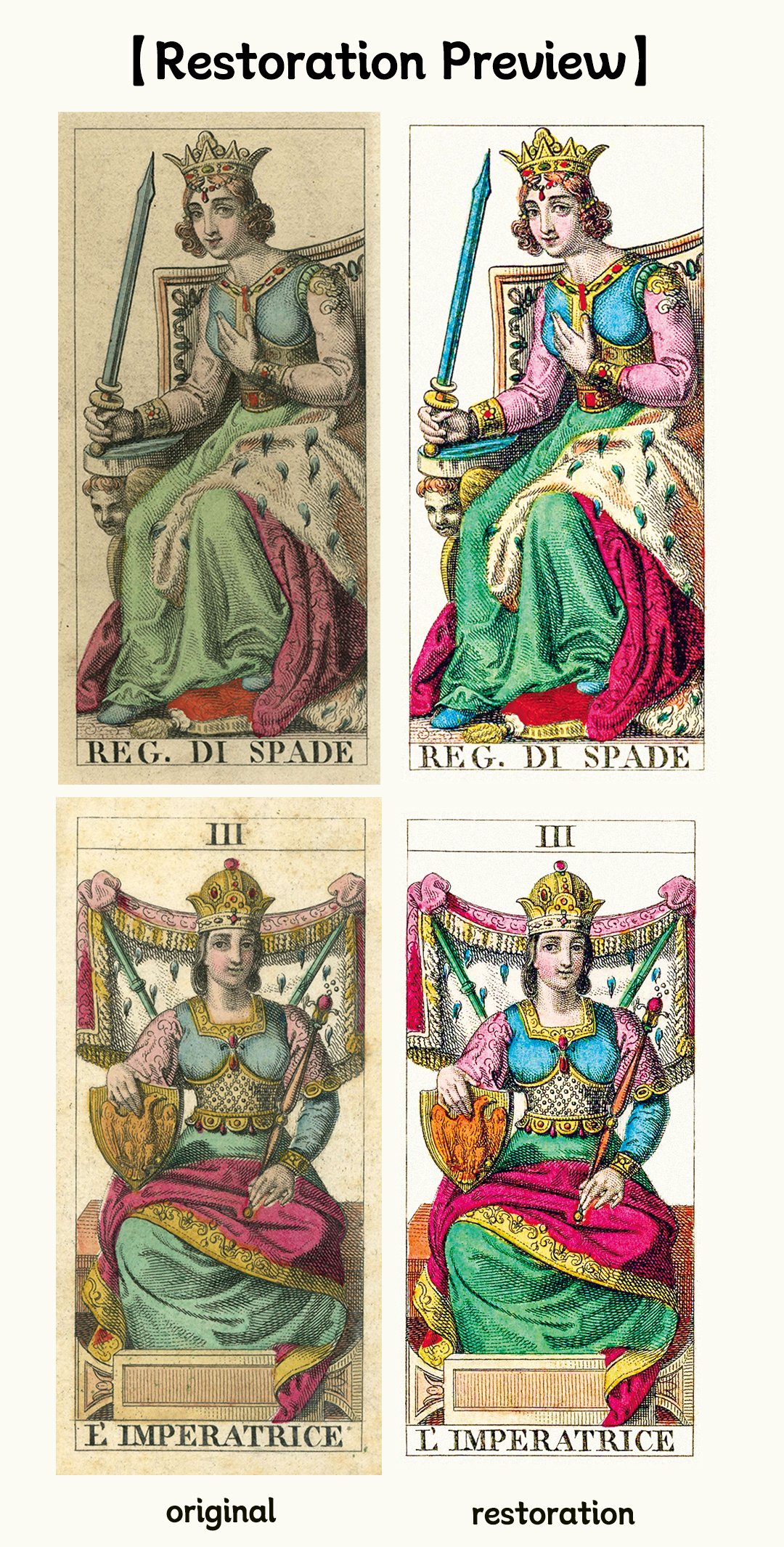78 Cards Tarot Deck + information and instruction cards
The pinnacle of tarot art in the 19th century
Card size: 10.6cm x 5.2cm (original size)
Made by 330g high quality casino paper with excellent toughness
Ships worldwide
Limited 1000 decks worldwide with only number
Other names:Milan tarot, Tarocchino Milanese
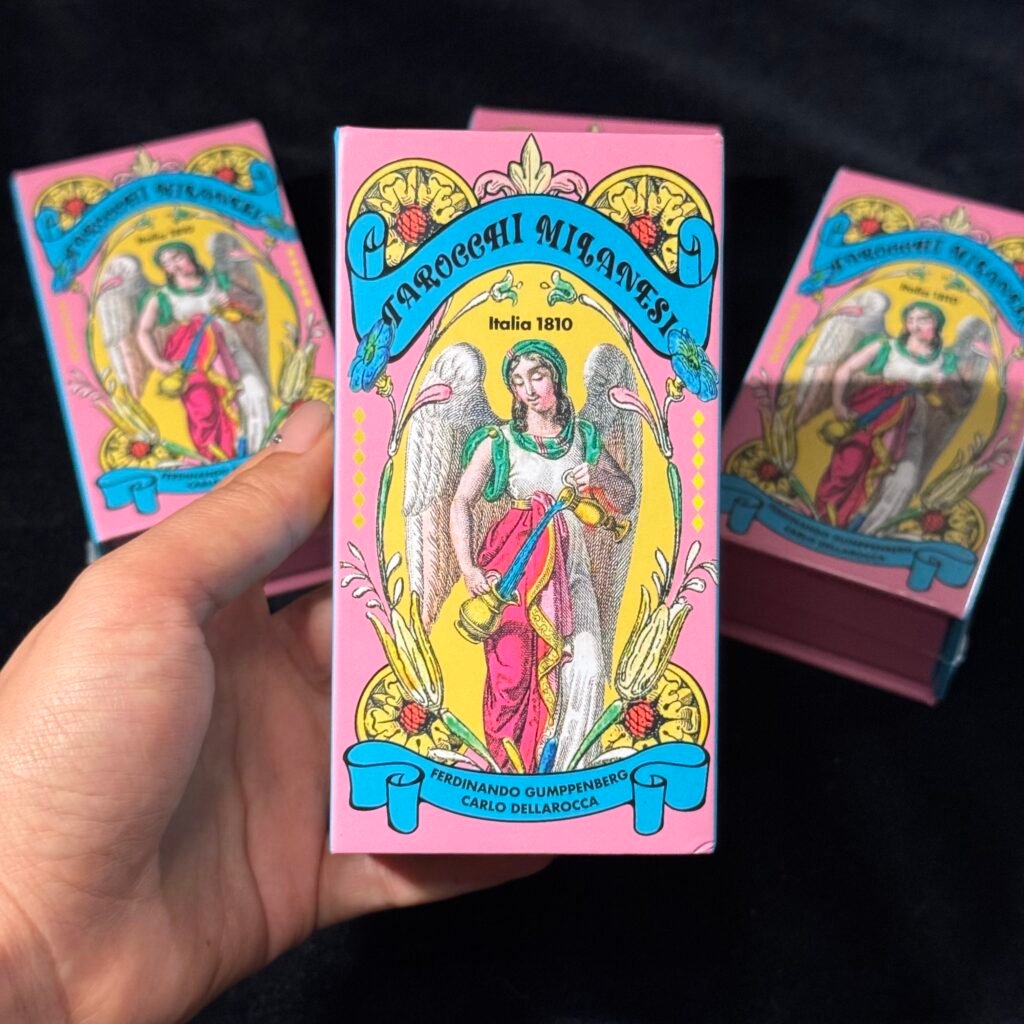
The first recorded tarot decks were found in northern Italy in the fifteenth century. At that time, the four suits were supplemented by trumps with allegorical illustrations. Over the years, the ‘Tarot de Marseilles’ deck was created, laying down the basic structure of the Tarot’s 78 cards.
After the birth of the Marseille Tarot, it became one of the most popular cards in Europe. However, in the 18th century, the card game declined in France, but spread to Italy, giving birth to well-known styles of tarot cards such as Piedmont and Milanese tarot cards.
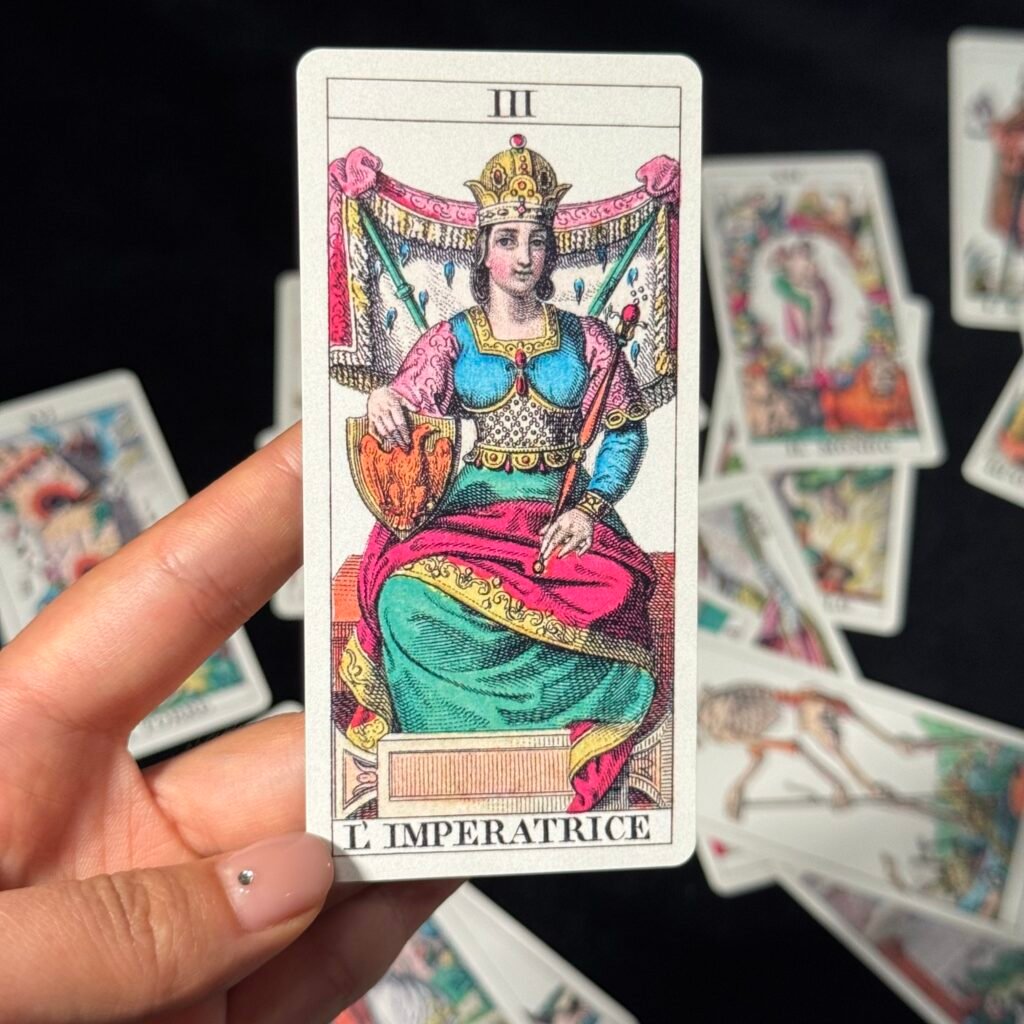
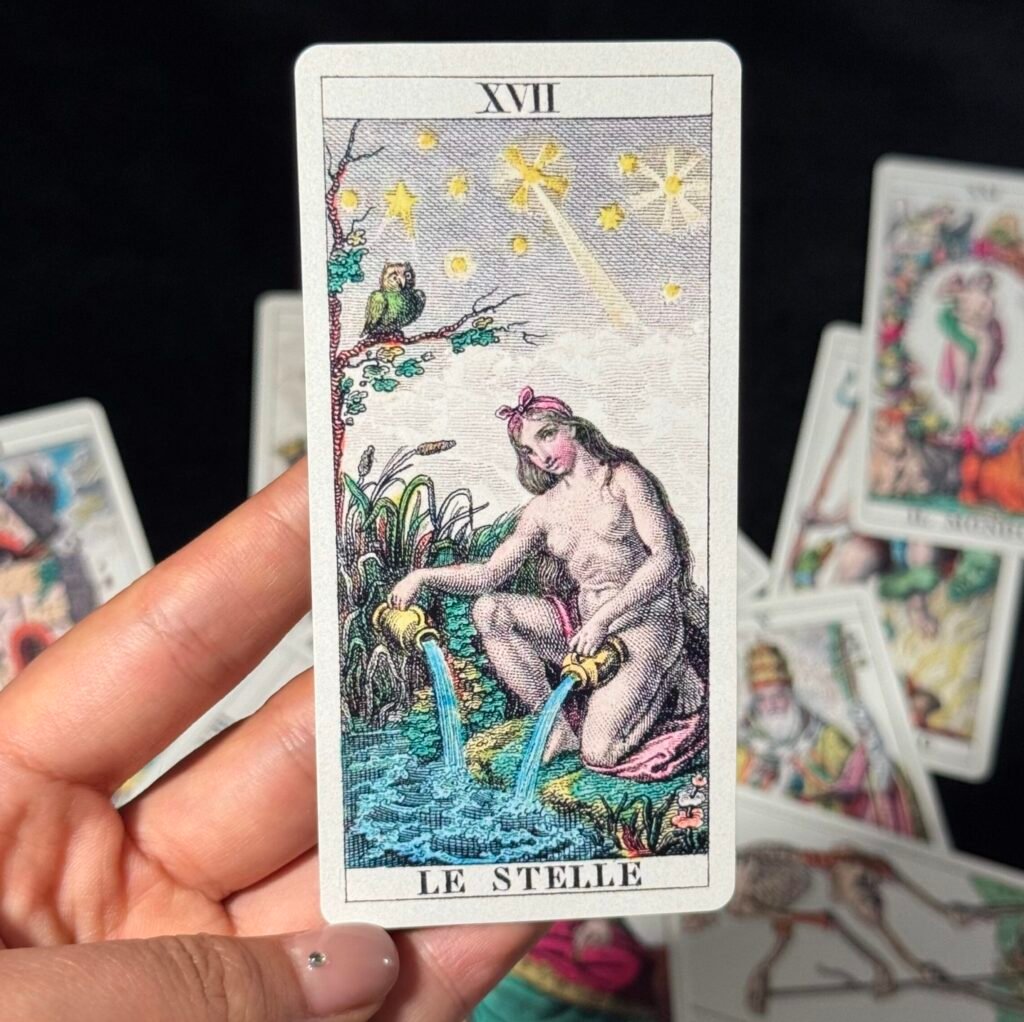
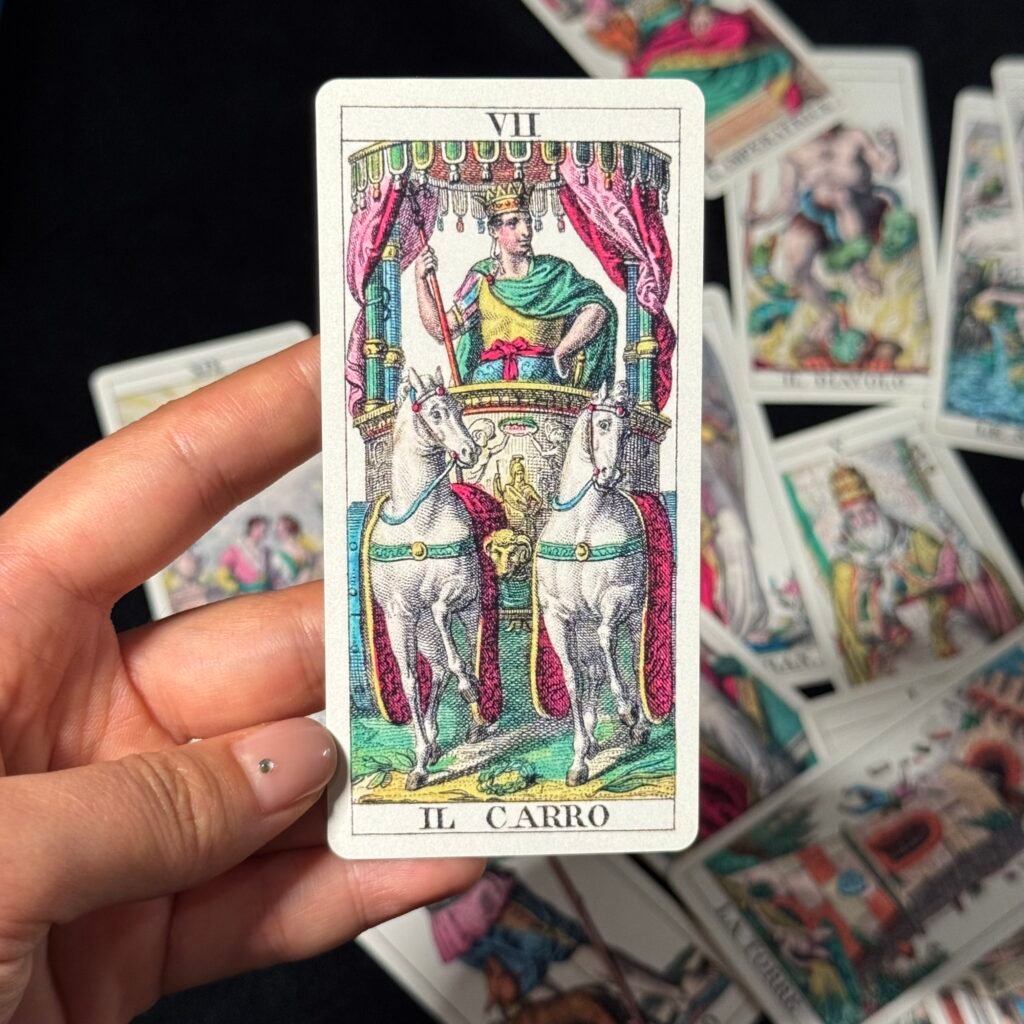
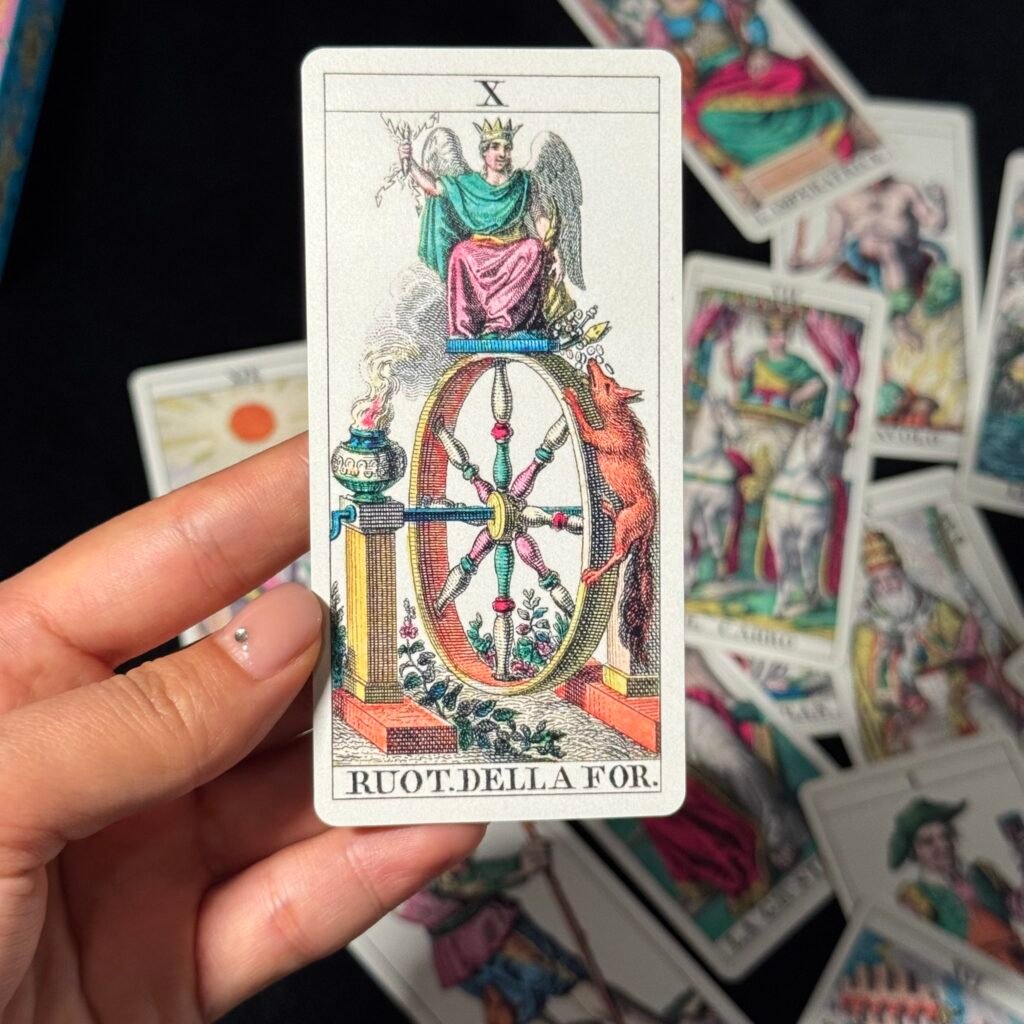
Ferdinando Gumppenberg, a German aristocrat and publisher, introduced to Milan the advanced printing techniques and aesthetic tastes of Germany at the time, and combined them with the classic ‘Marseille style’ to create a classic deck unprecedented in the history of tarot.
The most distinctive feature of this deck is the sculptor Carlo della Rocca’s creative blend of German, Italian and French culture and techniques, presenting the most special chapter and final glory in the history of the Tarot in a magnificent baroque style and amazingly detailed drawings.
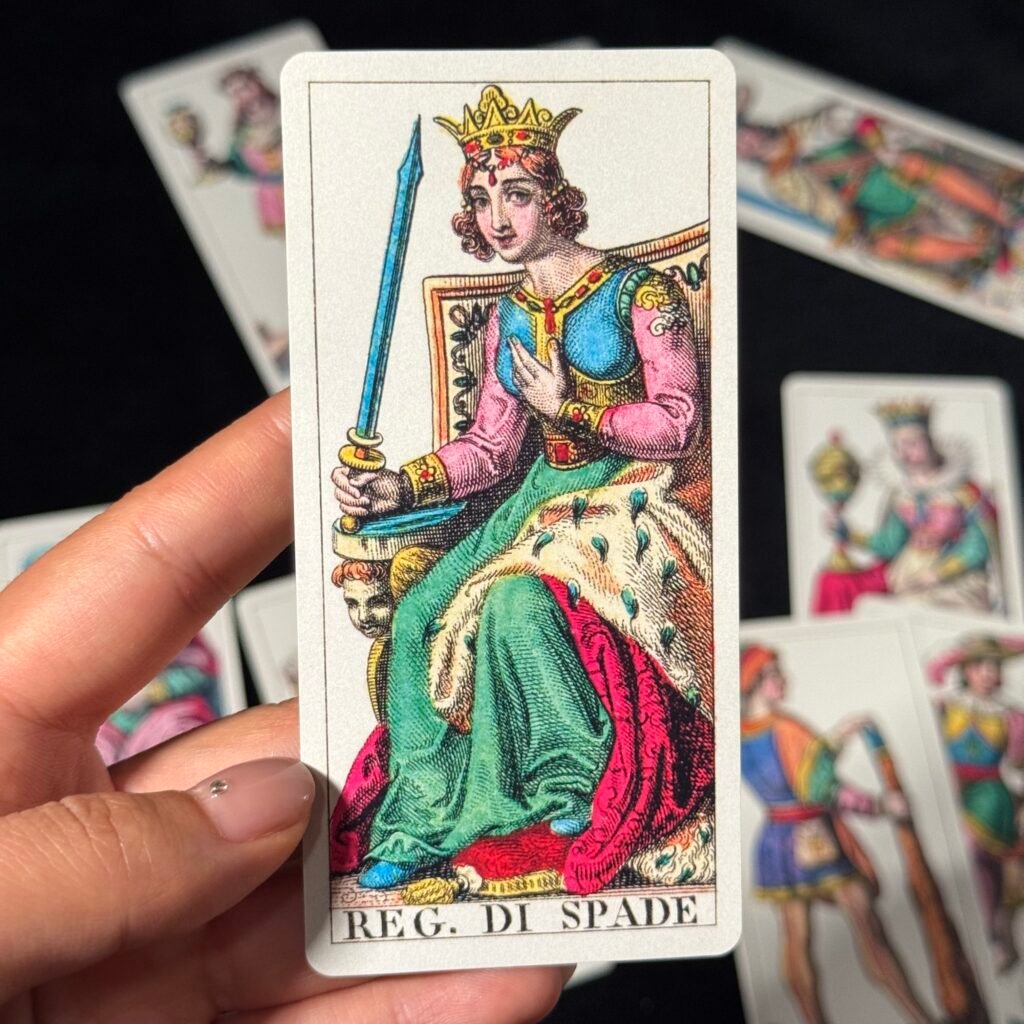
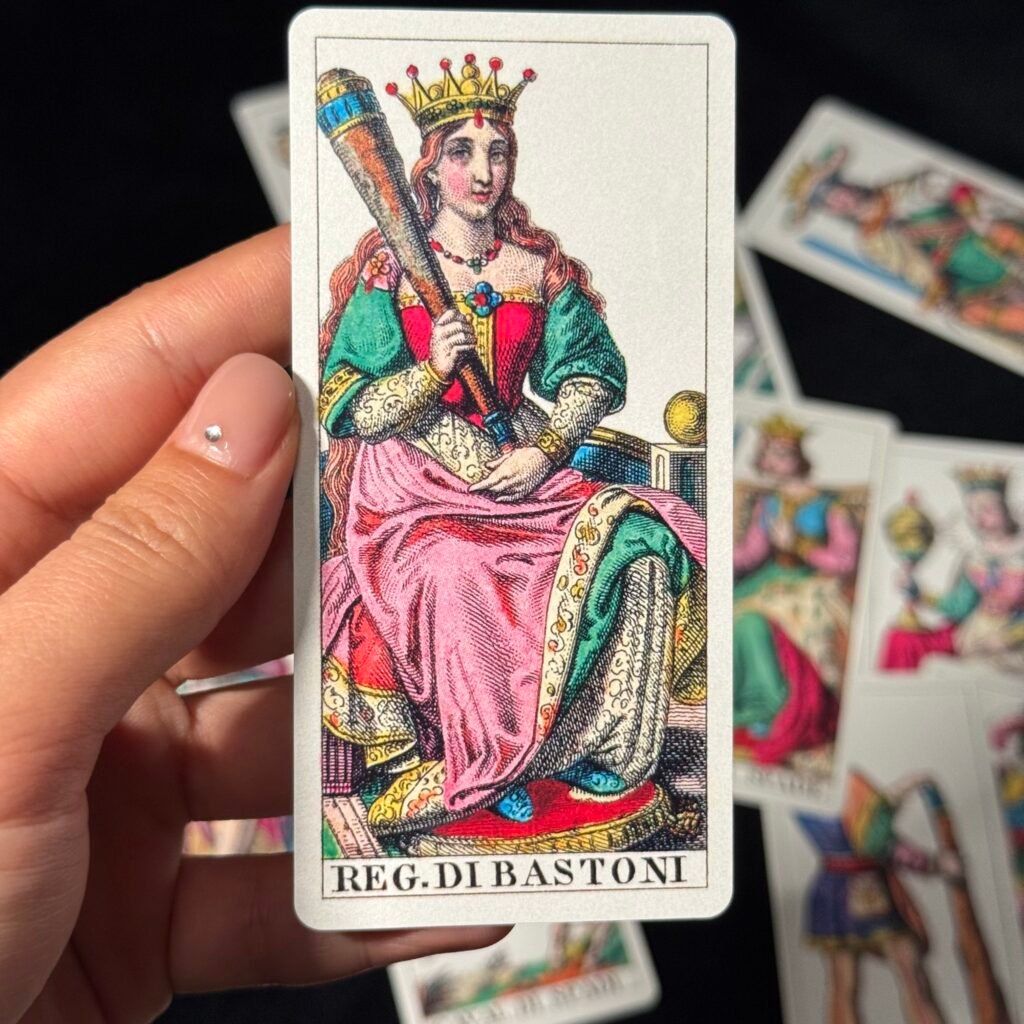
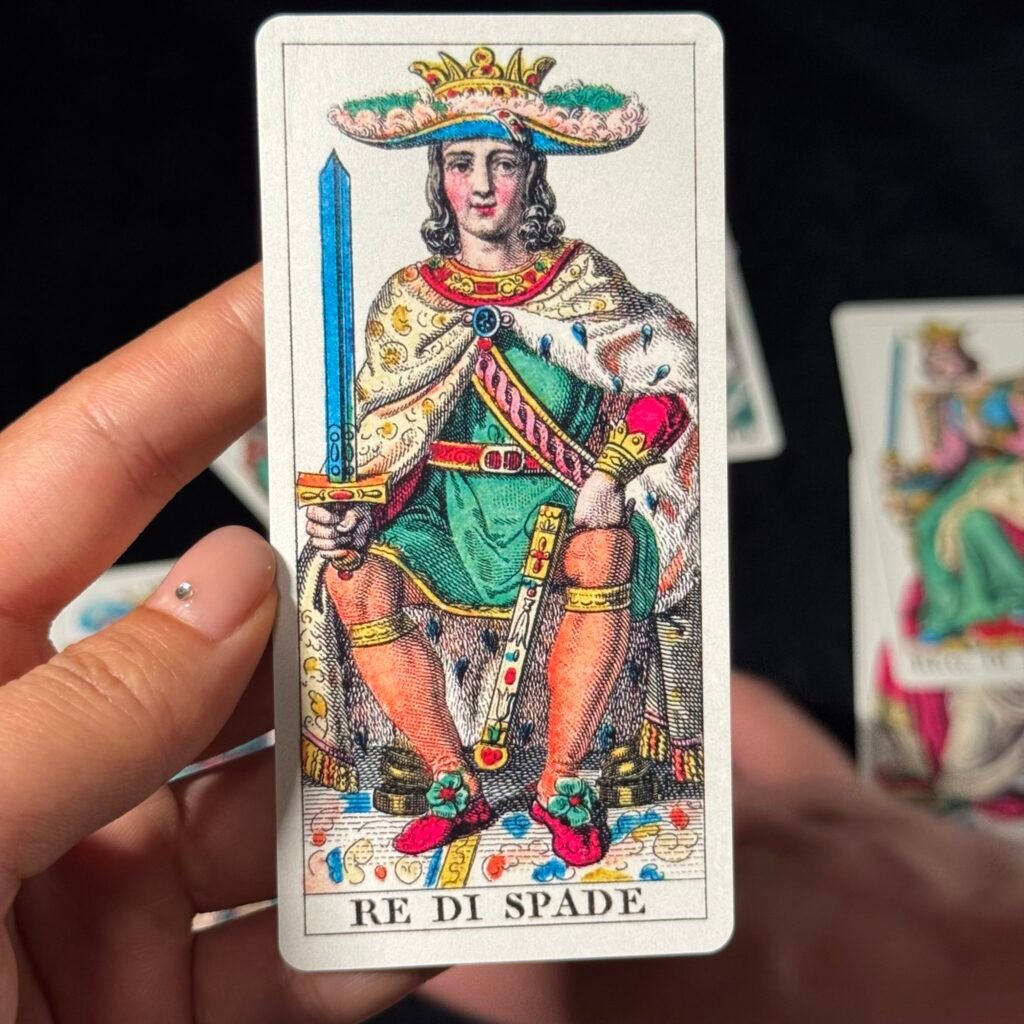
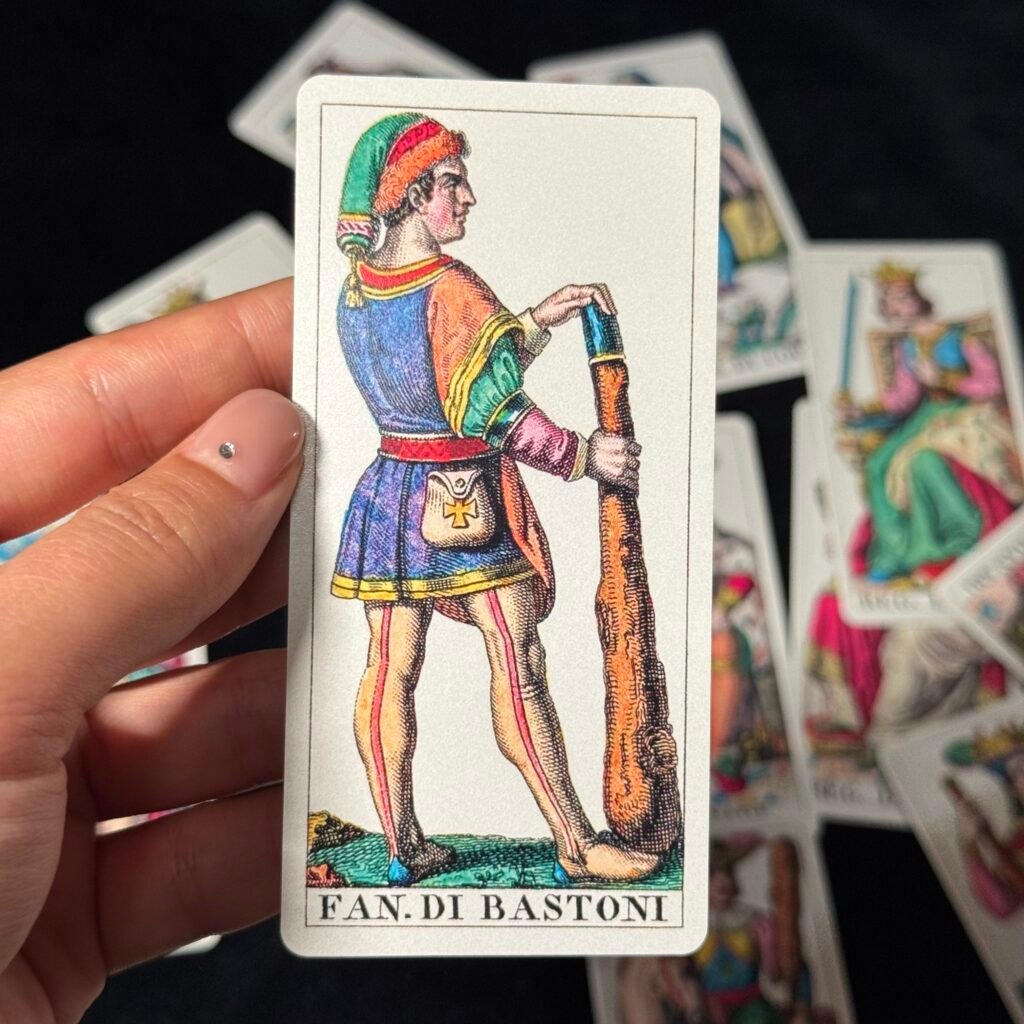
There is a clear lineage relationship between the Tarocchi Milanesi 1810 and 1845. According to the information, 1845 is the employee or partner of 1810, and there are a lot of similarities and differences in the lines, shapes, and creative styles of the two.
1810 has a more flamboyant style, more vibrant colours, and is more baroque in style. There are more details in the picture, and the picture elements are more abundant, relative to the modifications made by Marseille. 1845 has a more introverted style, with stronger shadows, and a more conservative and cold style. The image is more concise, and the layout of the elements is closer to the original Marseille composition.
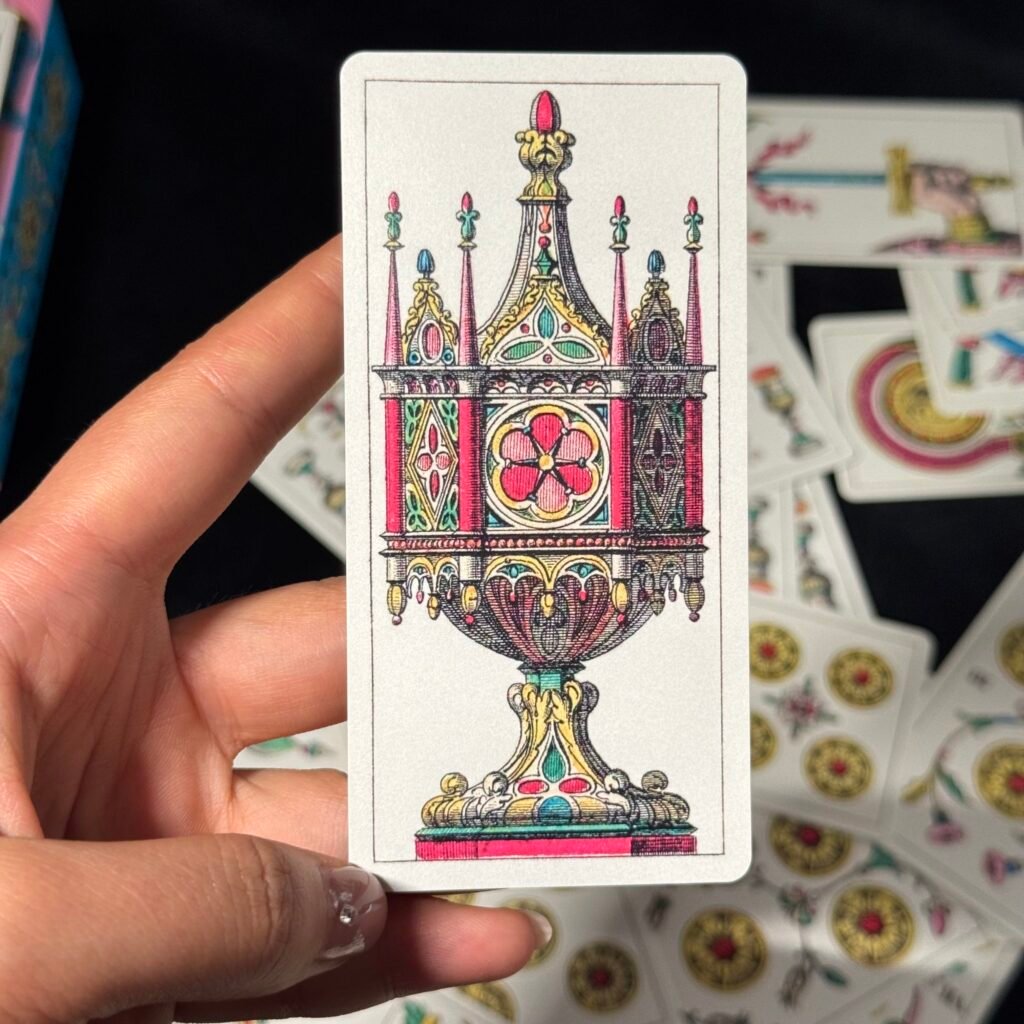
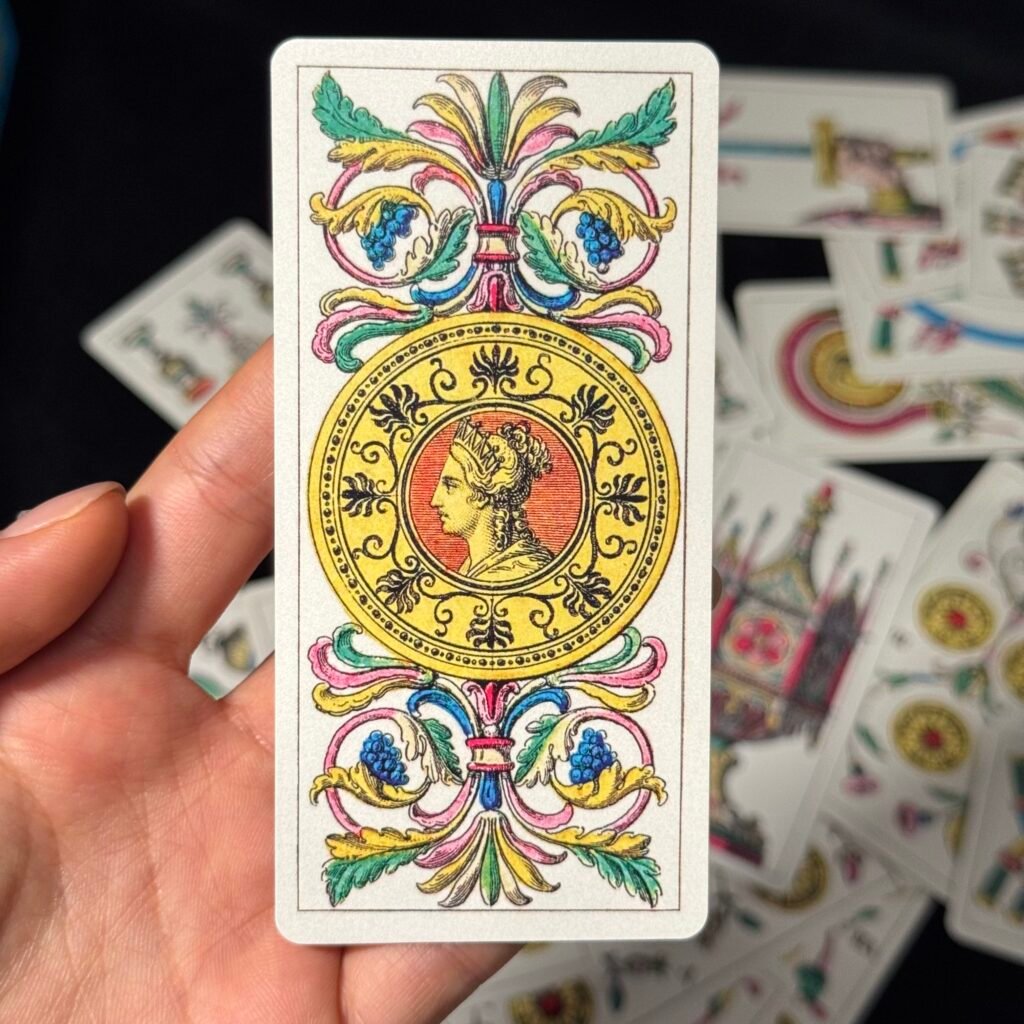
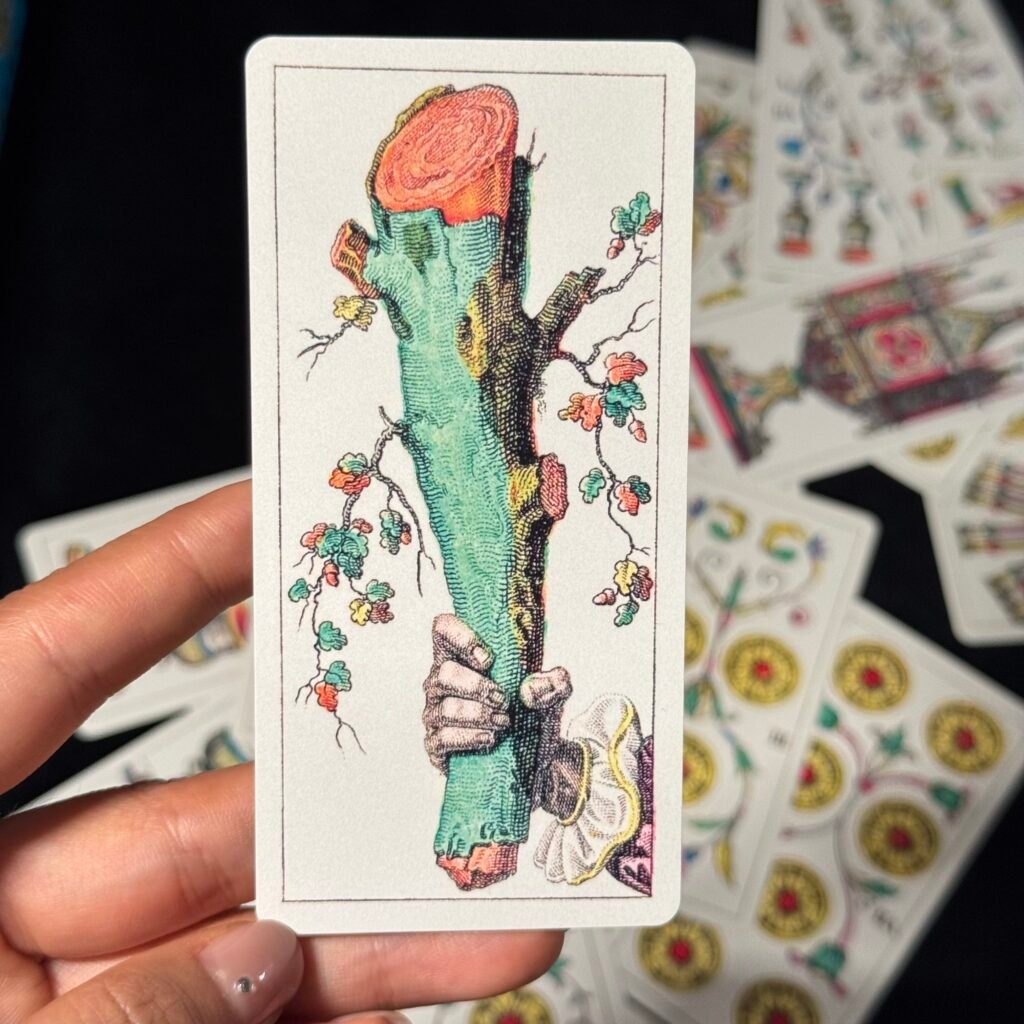
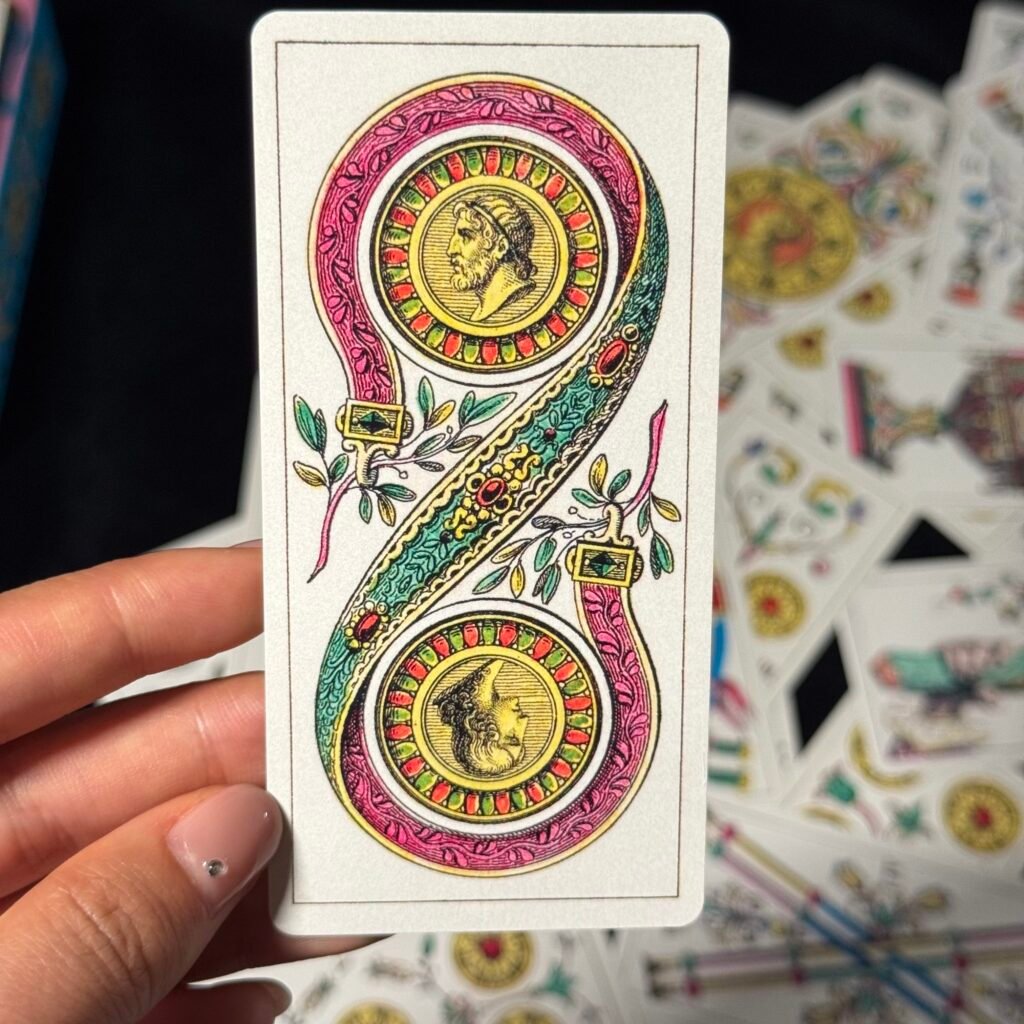
This restoration adopts the technique of restoring old photos, and finely restores the phenomenon of yellowing of the paper and a number of blemishes, etc. Moreover, through the comparison of several versions, the colours have been accurately filled in again, completely correcting the problems of yellowing of the colours and dimming of the colours that existed in the other versions, and restoring the original appearance of the master’s original works.
